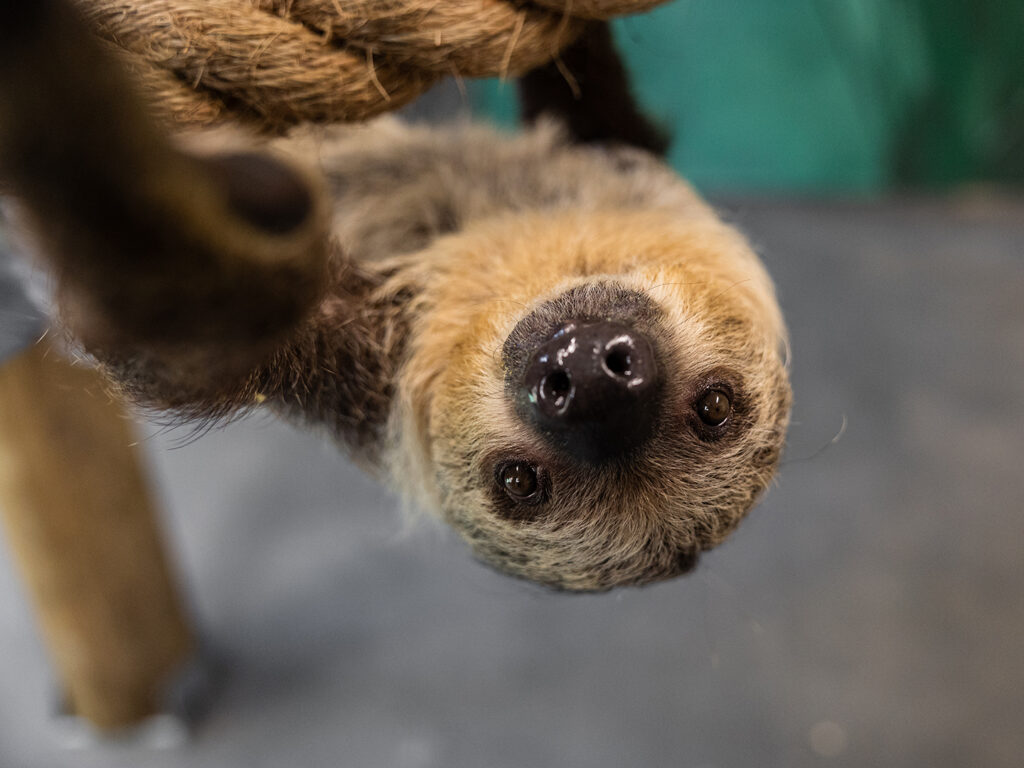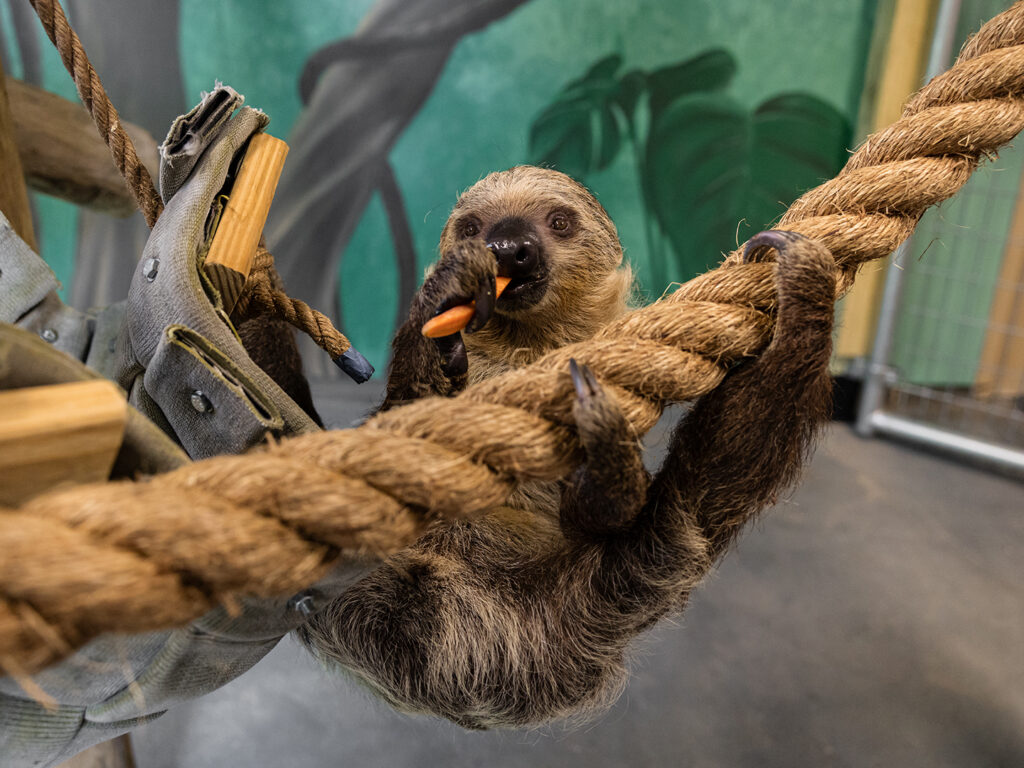Texas A&M Wildlife Center Welcomes Two-Toed Sloth
Story by Megan Myers, VMBS Communications

The Texas A&M School of Veterinary Medicine & Biomedical Sciences’ (VMBS) Winnie Carter Wildlife Center recently welcomed its newest animal resident, a Linnaeus’s two-toed sloth named “Michael Jr. Slow Poke Sloth.”
Michael Jr. was given to the wildlife center by a nearby animal sanctuary and arrived at the VMBS on April 12. His name is a combination of what he was called at his previous home (Slow Poke) and the Wildlife Center’s tradition of naming animals after individuals who have had an impact on the center, such as students, staff, and donors.
Having the 1.5-year-old sloth at the Wildlife Center presents a unique opportunity for undergraduate, graduate and veterinary students to learn about aspects of exotic animal care and medicine.
“He’s going to teach students about such an interesting species that most people don’t get to see every day,” said Dr. Alice Blue-McLendon, a VMBS clinical associate professor and director of the Wildlife Center. “Sloths are very unique in that their body temperature is lower than normal. The students will learn all about caring for an animal that has to have a climate-controlled environment.”
Upon his arrival, Michael Jr. quickly made himself at home in a specially designed “sloth barn” on the Texas A&M campus.
His enclosure includes an indoor, 100-square-foot temperature-controlled room and an outdoor fenced-in yard with 12 feet of vertical climbing space. These areas, which are connected by a small doorway, are furnished with trees, ropes, wooden nest boxes, baskets, and hammocks made from strong fire hose material.

“It was an all-volunteer team that did the construction of the sloth barn,” Blue-McLendon said. “When you construct and design things, you have to think about the fact that sloths are almost always upside down.”
While sloths are not known to play like some other species at the Wildlife Center, they enjoy having a variety of climbing materials and locations.
“They’re slow creatures, but their enrichment is what you provide them environmentally, such as places to climb, a calm atmosphere, and food that they like,” Blue-McLendon said. “We are so excited to have Michael Jr. here. It’s a very special thing to be able to provide a home for a sloth.”
In addition, the walls of his indoor area were painted with a vibrant rainforest mural by VMBS administrative associate Lisa Roberts-Helton, graduate student Baylee Baxter, and undergraduate student Katelyn Yacuk.
Preparing Michael Jr.’s home was not the only aspect of his arrival that required special planning. His diet — consisting largely of vegetables and specially formulated biscuits — presented another learning opportunity. He is nocturnal and is most likely to eat after sunset when he is most active.
“We formed a special sloth husbandry/care team because this is a species we’ve never had before, and we want to be sure that his husbandry, feeding and observation are stellar,” Blue-Mclendon said.
Sloths that live in captivity and have excellent husbandry tend to not need much veterinary care other than regular weighing to monitor their overall health.
###
For more information about the Texas A&M College of Veterinary Medicine & Biomedical Sciences, please visit our website at vetmed.tamu.edu or join us on Facebook, Instagram, and Twitter.
Contact Information: Jennifer Gauntt, Director of VMBS Communications, Texas A&M College of Veterinary Medicine & Biomedical Sciences, jgauntt@cvm.tamu.edu, 979-862-4216


